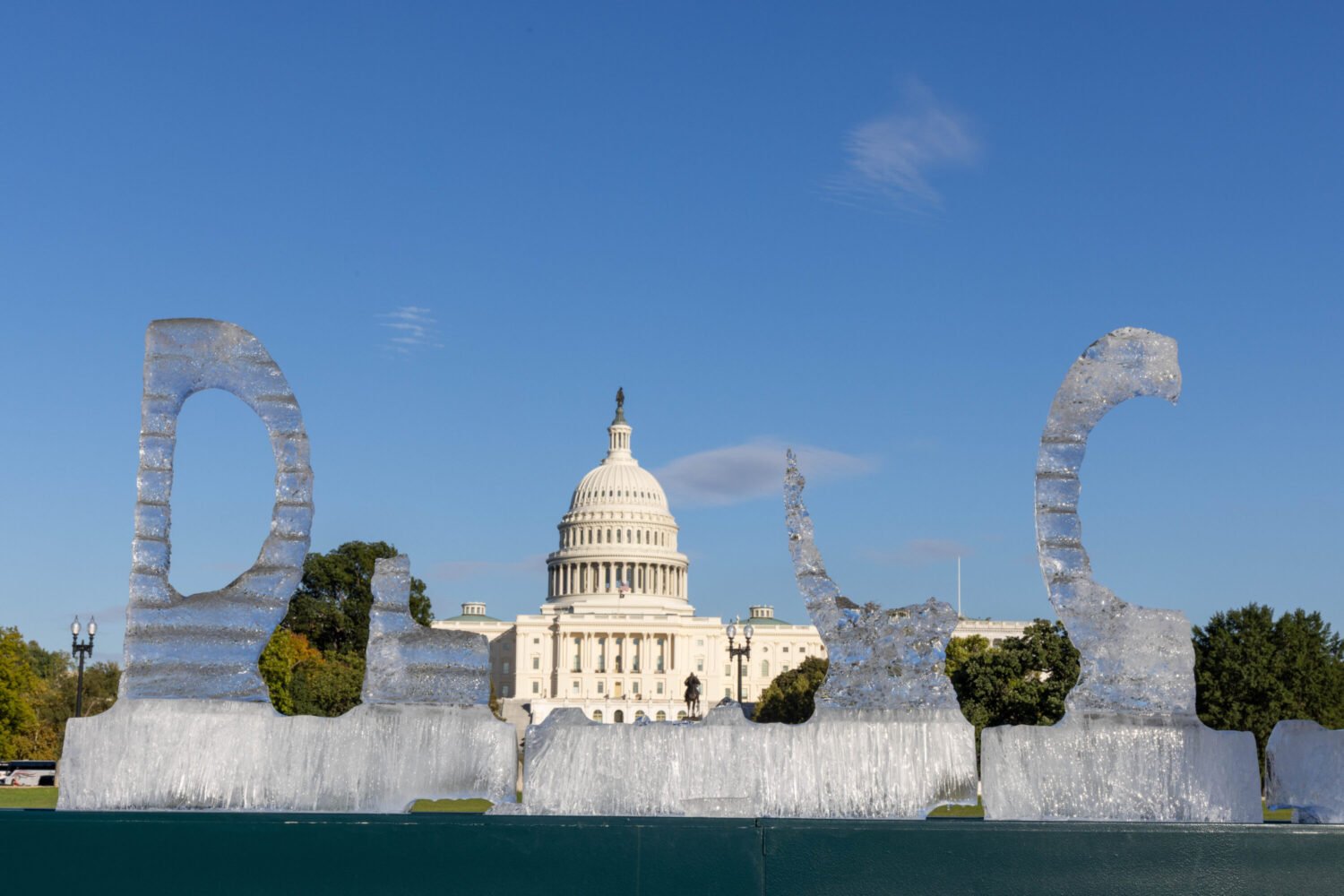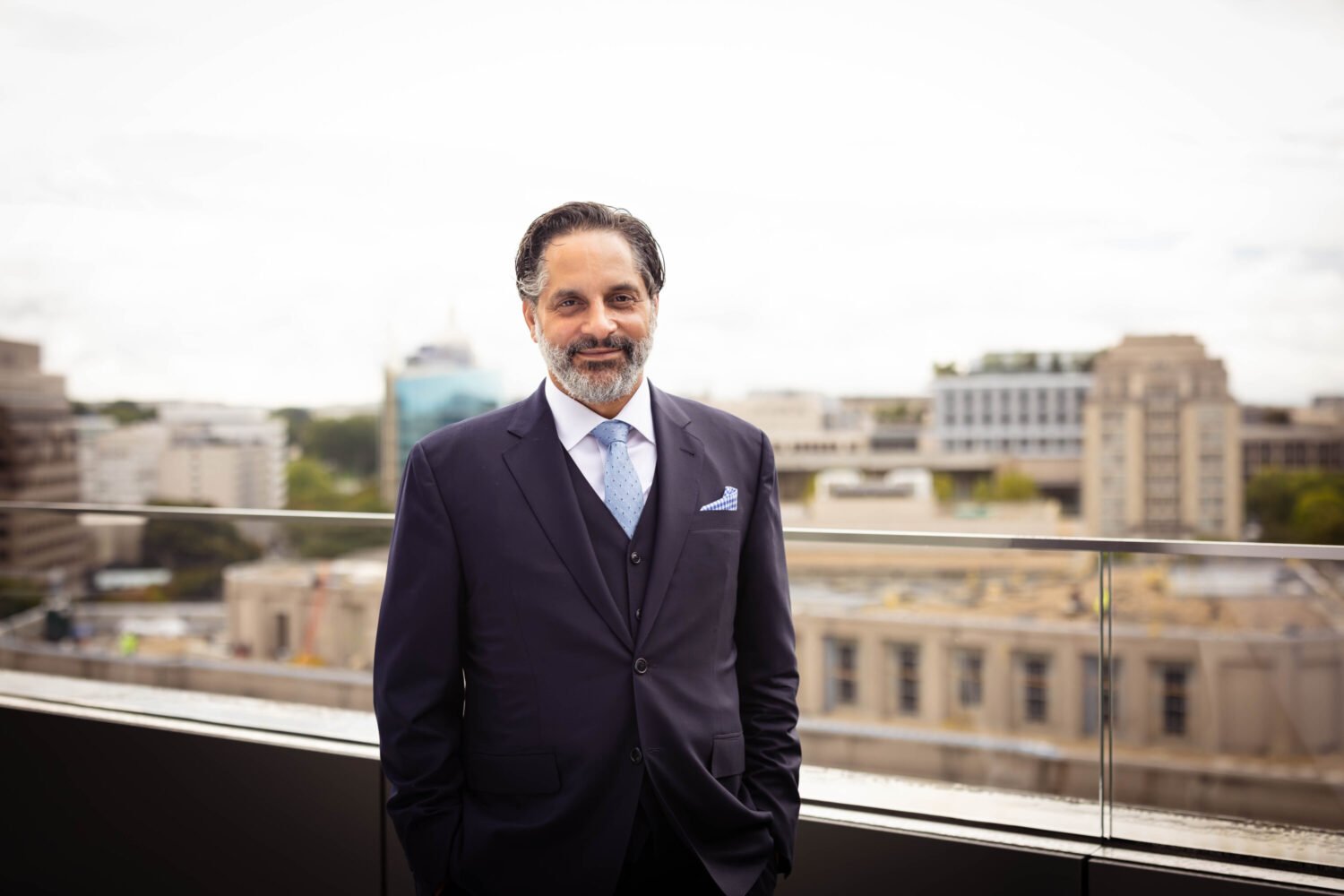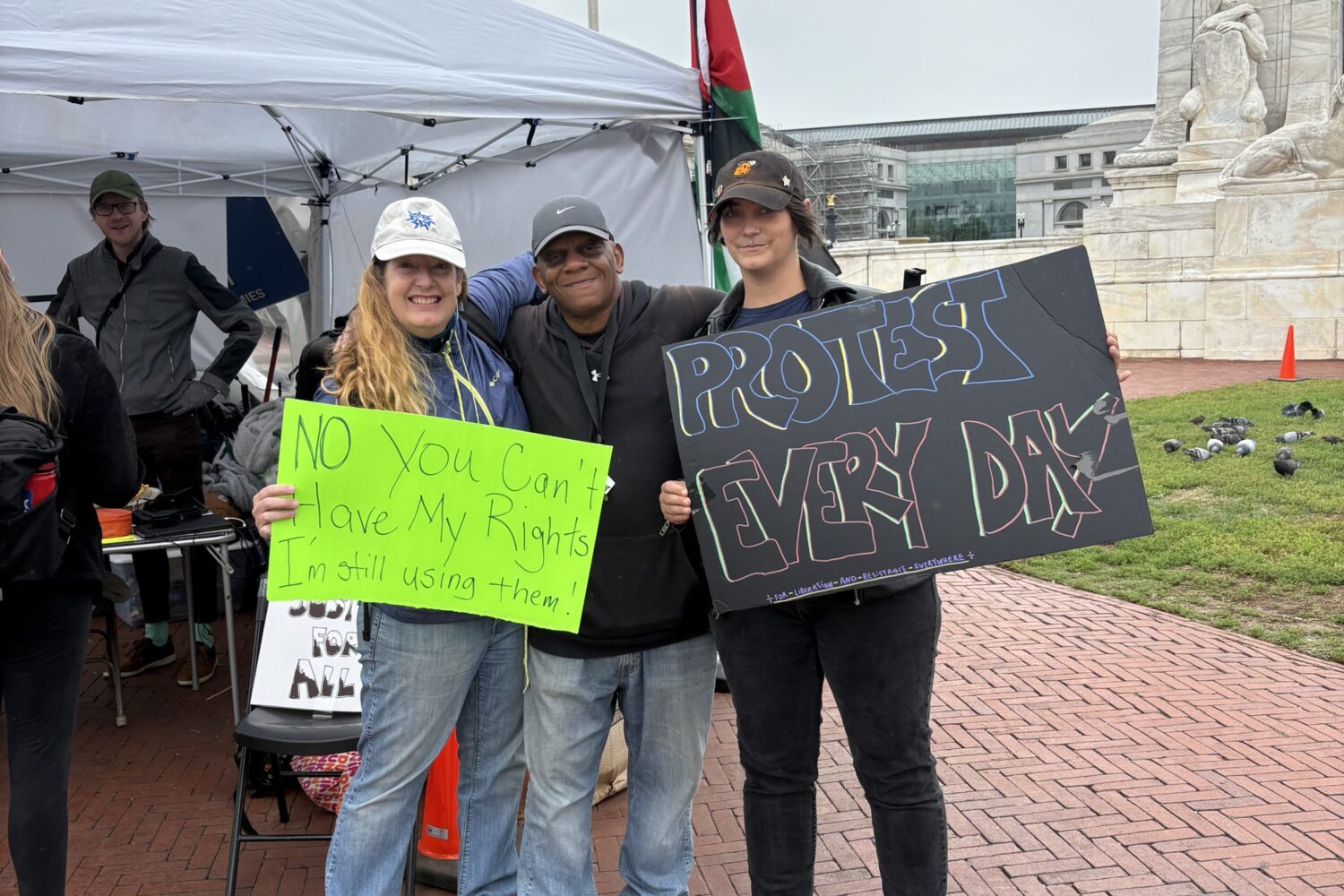Aren’t You On TV?
We see them before we go to bed and after we wake up. Sometimes we eat dinner with them. They're always talking; sometimes we're listening. But there's one story TV reporters and anchors don't tell us: their own.
For most broadcast journalists, Washington is a long shot. It's the nation's eighth-largest television market. Hundreds of résumés pour into newsrooms each year–the majority from women–for very few jobs.
To get here, you have to be good. To get here before you're 30, as these did, you have to be really good. Katie Couric, Maury Povich, Connie Chung, and Suzanne Malveaux all worked in Washington early in their careers.
Here's a look at local TV newscasters you're likely to see more of. They could be the next generation of network anchors and correspondents.
EUN YANG
The Next Katie Couric? Jim Vance Says It's Easy to See
When Eun Yang told her parents she wanted to major in broadcast journalism, they thought she was crazy.
"What was expected of me was to have a good, stable job," says Yang, whose parents are Korean immigrants. She'd watched the news as a toddler and mimicked reporters. She looked up to Connie Chung.
"I always joke that I have no talent except to talk to people," says Yang, who was born in Korea, grew up in Silver Spring, and graduated from Silver Spring's Paint Branch High School in 1991.
Yang told her parents she'd probably have to move to a small town to get a broadcast job. Instead she took a summer internship at Channel 9 (CBS) and worked her way up to reporter–a rare feat in television news.
In 1995 Yang worked full-time as a Channel 9 production assistant while completing her major in broadcast journalism at the University of Maryland. She'd been a "reporter trainee" for a year when the station started its weekend-morning newscast. For that, she says, "I did every dog show, doll show, jewelry show, home-and-garden show, teddy-bear expo–anything you can imagine."
After 6H years at Channel 9, Yang went to work as a correspondent for the National Geographic Channel. She was doing a story at a museum on September 11, 2001. Her instinct was to start reporting, but the channel didn't cover breaking news. "It was so hard for me to be watching," says Yang, who turns 32 this month. "I had to get back into news."
She went to Channel 4 (NBC) as a reporter in 2002–she'd turned down a job in New York, the nation's number-one market, to stay in DC–and started anchoring on weekends last year.
"It's not hard for me to envision Eun as the host of the Today show," says veteran Channel 4 anchor Jim Vance. What he particularly likes about Yang, Vance says, is that "she doesn't get in the way of a story. At the same time, you can't help but notice her."
Yang, who has an eight-month-old boy, got to know her husband of four years, Robert Kang, while doing a story on single life. She interviewed Kang, a pastor, about couples who meet at church. A year later they married in front of more than 600 guests. It's Korean custom, Yang says, for parents to invite "all their friends and everyone they know."
Kang once told Eun that he hadn't been sure he wanted to take her out again after their first date. She'd asked too many questions.
STACEY COHAN
The Holton-Arms Kid Who Beat Pat Collins
Stacey Cohan wasn't nervous for her first interview, part of a class assignment at Holton-Arms School. She'd listened to her dad and grandpa talk politics, and she liked asking questions. Brandishing her tape recorder and wearing her school uniform, she asked then- Maryland congressman Michael Barnes about his priorities and where he'd be in ten years.
"I was 12," she laughs. "I'll cut myself some slack."
Barnes was impressed; says Cohan, "He told me I'd be a great journalist one day."
Cohan, 35, didn't plan on a television career, but she liked telling stories. "I was always curious," says Cohan, a third-generation Washingtonian who grew up writing poetry and short stories. "People have always come to me and spilled their guts."
After graduating from Syracuse University in 1991, Cohan worked as a radio reporter, then as a production assistant and writer in CNN's Washington bureau. She also freelanced on-air at Prince George's County Cable TV, sending her tapes to small markets.
Cohan liked cable. She took a job there as a reporter and later produced and anchored a public-affairs show. While covering a drug raid during which police stumbled upon 27 pit bulls, Cohan ended up with a puppy. "I named it George," she says, "after the animal-control guy who convinced me to adopt."
At some point during her five years on the crime beat, Channel 9 veteran Dave Statter took notice. "Everywhere I turned, on stories I thought I was breaking, I'd find Stacey Cohan," he says. He told his bosses they should hire her.
Cohan started as a morning reporter at 9 in 1999. A year later, she walked into her boss's office with a two-page memo and a list of stories she'd broken. She soon got promoted.
In 2000, after she scooped Channel 4's Pat Collins on a big crime story, Collins told Cohan's colleague Mike Buchanan, "The kid beat me."
"That was the first time I knew I'd arrived," says Cohan, who played a key role in Channel 9's sniper coverage.
On USA Tonight, the area's only 7 PM newscast, Cohan's enjoying the chance to work on longer features–three minutes versus 90 seconds–and environmental stories about the Chesapeake Bay.
She wishes she didn't have to worry about the camera. "I'm not a girly-girl," she says. "If I wear a beautiful skirt suit with high heels, I will end up in mud–it's just a rule."
BRIAN VAN DE GRAAFF
Doug Hill's Star Pupil: He's Ready for Tornadoes
Growing up in Culpeper, Brian van de Graaff rarely missed Doug Hill's 5:55 PM weather segment on Channel 9.
Friends made fun of him. "No one at that young age watches television news," he says. At age ten, he phoned in weather reports to radio stations.
During a high-school field trip on which Hill showed him the "weather center," van de Graaff realized he could turn his hobby into a career. He interned in Channel 9's marketing department–he didn't get the weather internship–while finishing at George Mason University. At night, he shadowed Hill. After completing a broadcast meteorology program, van de Graaff became Hill's producer. When Hill moved from Channel 9 to Channel 7 (ABC), he made van de Graaff part of his contract.
"Brian is my star pupil," says Hill. "Although I tell him he can't have my job for a while."
While working weekdays at Channel 7, van de Graaff got on-air experience as a weekend weathercaster for a Salisbury station. He was on the air when a tornado threatened the Eastern Shore. His fiancée–now wife–Kristen called during a break and said, "Take a breath. The fear in your face when you just went on television–you'll have people running for the hills."
After a stint in Richmond, van de Graaff did the midday weather on NewsChannel 8. When an opening came up at Channel 7–the ABC affiliate merged operations with NewsChannel 8 in 2002–he told news directors, "Give me this shot. Let me fill in for the holidays."
Now van de Graaff, 30, does more than 20 weather hits a day for Good Morning Washington plus the noon newscast. He also does weather updates on Z104 and WTOP radio. "A sunny day can be a boring day," he says.
He'll wear the same tie–he has about 60–only every two weeks. "My wife helps dress me," he says.
He fills in for Hill on evening newscasts. "The other day I worked with Gordon and Maureen, and my stomach was in knots," he says. "Sitting on that set with them, it was kinda like, 'Wow–I've made it.' "
TRACEE WILKINS
Prince George's, Tanzania, >Mississippi–Next: the Big Time
A Prince George's County native, Tracee Wilkins, 29, grew up watching Channel 4 news. Her dad worked for the postal service; her mom spent seven years with the US Commission on Civil Rights. They liked talking politics.
"To keep up with dinner conversations, you had to pay attention," says Wilkins, a graduate of Beltsville's High Point High School. She planned to become a lawyer–"I wanted to be Claire Huxtable"–but changed her mind when she toured Frostburg State University's radio station.
"This is what I'm supposed to do," she thought. At Frostburg, Wilkins hosted her own R&B radio show and reported for the school's television station.
After an internship with Channel 4 consumer reporter Liz Crenshaw and a summer in Tanzania, where she wrote for the Arusha Times, Wilkins applied for newspaper, radio, and television jobs. "Whatever comes back first, that's what I'll do," she decided. The first call came from Channel 4, where Wilkins started her career as a production assistant and soon started writing. Susan Kidd helped critique Wilkins's audition tape.
Wilkins landed her first on-air job in Columbus, Mississippi: "My first time reporting there, the whole newsroom was empty. I said, 'Who's gonna answer the phone?' "
Her next job was in Greensboro, where she worked for four years. At a National Association of Black Journalists conference in 2003, Wilkins showed her tape to Channel 4 managers, who asked when her contract in Greensboro was up.
As a freelance reporter, Wilkins does at least five stories a week. Her parents are loyal viewers. "I get critiqued," she says. "My father will say, 'What lipstick was that? You don't need all that makeup!' "
While reporting last year on the shooting death of a 14-year-old girl who'd seen an older boyfriend commit murder, Wilkins noticed that the girls walking around the victim's DC neighborhood looked like they were growing up too fast.
"I remember thinking, they're headed down the exact same path," she says. A week later, Wilkins walked into the Boys & Girls Club in Northeast DC and told the director she wanted to start a mentoring program. Through Girls Are Talking, she meets weekly with teens to discuss issues like parents, boyfriends, and drugs.
"These kids need us," says Wilkins. "We've all seen it on the news every day."
LAURA EVANS
Five Internships and a Makeover: How to Climb to the Top
Laura Evans did five broadcasting internships, including one at CNN, before meeting with a headhunter in 1993. "He jumped at the sound of my voice," says Evans. "He told me I needed to take voice lessons, cut my hair, put on makeup, get clothes that are flattering, and redo my tape." She went back to her hometown San Francisco station for help.
Evans wanted to cover news since she was in middle school and had a newspaper route to help pay for her horse. As a teenager, she would set her parents' video camera on the kitchen counter and record herself reporting fictional stories about friends. "The one I remember best was the kidnapping involving Erica and the blue Camaro," she says.
After graduating from the University of San Diego in 1991, where she majored in American Studies and Spanish and wrote for the college newspaper, Evans wanted to find a job at the 1992 summer Olympics in Spain. She received ten "we're not ready to hire" letters from NBC, the network broadcasting the games, but bought a one-way ticket to Barcelona. She tracked down the NBC office and got a job logging tapes.
From there Evans went to Aspen, where she took up snowboarding and reported for National Public Radio. After that meeting with the headhunter and making a new tape, she moved to Eureka, California, for her first on-air work at a local station. For $5 an hour, she also shot the video and ran the TelePrompTer. "I was a one-man band," says Evans, 36. She didn't mind: "I was finally being paid to do this."
Evans spent three years anchoring and reporting in Santa Barbara before jumping to DC's Channel 5 (Fox) in 1999. "Laura is the kind of person that when you're flipping through the channels, you stop," says Channel 5 news director Katherine Green, who still remembers the tape Evans sent her six years ago.
A regional Emmy winner in 2003, Evans anchors the weekend 10 o'clock news–she competed with Shawn Yancy for the top anchor spot–and reports three days a week. She and her husband, Mike Manatos, a public-policy lobbyist, are expecting a baby in September. Their first few dates included horseback riding and biking; Evans has completed 20 triathlons.
Her most memorable reporting moment never aired. Evans was at the Pentagon on September 11 when a frantic man approached her carrying an American flag. He wanted the flag to hang from the roof as a statement to the terrorists. Reporters weren't allowed near the building, but he insisted Evans find a way. She spotted two soldiers, gave them the flag, and relayed the man's story.
"I thought they'd say, " 'Yeah, right, lady,' " says Evans. "But they agreed that's where it needed to go." Twenty minutes later, the flag was hanging from the roof. It was soon replaced by the larger one the world saw draped over the side of the Pentagon.
ALISON STARLING
Leon Harris's Protégé: Them Over on the Dawn Patrol
Before applying for her first job, Alison Starling sent résumé tapes she'd made in college to her favorite national newscasters, hoping for feedback. She figured they'd toss the tapes aside. But Leon Harris, then an anchor at CNN, called Starling. He liked her tape and had suggestions.
The encouragement gave Starling the push she needed. She got a reporting job in Chattanooga, where she spent three years. As her career progressed, Starling called Harris for advice and sent him stories she was proud of. Now Starling occasionally shares the anchor desk with her mentor. "It's a matter of time before she is one of the most popular people on television in this town," Harris says.
Starling, 31, decided on broadcasting in third grade, when she realized newscasters knew everything that was going on. When she read the announcements on her elementary-school television show in Florida, kids teased her for wearing her easily removable dental headgear on-camera. "They were asking if I could get radio reception," she says.
While majoring in broadcast journalism and telecommunications at the University of Florida, Starling did a summer internship on Capitol Hill. She decided she wanted to work around DC. She spent three years in Seattle–after Chattanooga–before joining Channel 7 in August 2003.
Since Starling and Doug McKelway started anchoring Good Morning Washington last year–with Brian van de Graaff–viewership at 5 AM has nearly doubled. One explanation: They're friends. "You just can't fake that chemistry," she says.
Starling leaves for work at 3:30 AM. When she's not sleeping, she watches the news, works out, or catches up on recorded episodes of Alias and Desperate Housewives. "It's hard to find someone who wants to date a woman who goes to bed at 8 at night," says Starling, who also anchors at noon. On weekends she boycotts hair and makeup.
A volunteer with Big Brothers Big Sisters, Starling likes talking with kids about her career. But she wasn't sure what to say when a first-grader asked, "How do you fit inside the TV?"
EMILY SCHMIDT
Iowa Farm Girl Makes Good Inside the Beltway
Emily Schmidt had a plan when she moved from Wisconsin to Des Moines for a reporting job. She'd always wanted to cover politics. With the 2000 Iowa caucuses coming up, she'd interview presidential candidates and see how they ran their campaigns.
She got access: Politicians wanted to talk to the local reporters more than to the networks. She interviewed them at the state fair and watched them in people's living rooms. "Even though it's still staged in Iowa," she says, "it's a little more human."
Des Moines was 2H hours from Schmidt's home. Her dad put up a television tower so her family could watch her. Schmidt grew up on a farm–she helped weed the bean fields–in a town where high-school football makes headlines. Her family watched a lot of news. In ninth grade, Schmidt's essay about why she wanted to be a sportscaster won her one three-minute anchoring gig on the local evening news.
After graduating from the University of Missouri School of Journalism in 1996, Schmidt landed a job in La Crosse, Wisconsin. For a while, she did the weather. "It was the smartest thing somebody ever made me do," she says. "You learn how to talk for 3H minutes."
She was eager to move to a bigger market–until a crew from Nightline came to town for a different perspective on the Clinton/Lewinsky scandal. Schmidt helped the crew make contacts; they helped her realize she could cover big stories in small markets. "That was my first big wake-up call that good news isn't where all the other guys are," says Schmidt. "Sometimes it's where you are–if you know how to find it and how to tell it."
Schmidt went from Wisconsin to Des Moines, where she won a National Edward R. Murrow Award for a story about an Iowa widow struggling to run her family farm. Her storytelling ability has helped her win ten regional Murrow Awards and two regional Emmys. "When you're from a small town, you know everybody's story," she says, "so you get kinda good at telling it."
Schmidt, 31, spent two years in Baltimore before joining Channel 9 as a reporter in April 2004. She's still awed by parts of her job–like covering the presidential inauguration. "At the moment when they go by you think, 'Everybody in the world is watching this on television right now, and it's ten feet in front of me,' " she says. "I hope that part never wears off."
ANGELA RUSSELL
How Mooing Like a Cow Launched a Broadcast Career
Angela Russell was with friends at a mall in Pensacola where producers were looking for teens to host a local Saturday-morning show. Russell, then 14, wanted to be a lawyer, but she got in line for fun.
The script called for silly antics, including mooing like a cow. "A lot of girls felt uncomfortable at that age about actually moo-ing," says Russell. "I did the moo." And got the job.
At the University of Florida, Russell worked in radio, television, and newspapers, often holding down five jobs at once. She forgot about law and decided to get into broadcasting.
At the same mall in Pensacola two months before graduation, she ran into a manager she knew who wanted her to be in a commercial. While shooting it, Russell met producers who also worked for a station in Mobile, Alabama. She asked them to take her résumé tape back with them. When Russell didn't hear from the news director, she called and said, "Look, I'm an hour away from you. I could be there by 1. . . . Let's meet."
The meeting paid off. Russell spent six years as a reporter and anchor in Mobile and hosted a public-affairs show. She met her husband, Telly, in Mobile. They ran into each other at the hair salon–they shared a stylist–grabbed dinner at Subway, and stood in the parking lot talking for the next eight hours.
When Telly got into med school at Georgetown University, Russell told her agent she needed a job in Washington. He was skeptical: DC was a big jump, he said, and jobs rarely open up. She had offers within a few months and was also one of 17 finalists considered to cohost ABC's The View, a morning talk show with Barbara Walters.
Russell, 30, joined Channel 7 as a reporter in 2003. She bought her first pair of snow boots and learned to layer her clothes. She couldn't believe restaurants didn't serve sweet tea. "I didn't know anything but the deep South," she says.
Last June, Russell was tapped to fill in as morning anchor on NewsChannel 8–WJLA owns both stations–where she spent eight months before returning to Channel 7 as a full-time reporter.
She's expecting a girl in July.
"I've been amazed by the number of people who'll say, 'So you're pregnant, what are you gonna do about work?' " she says. "Like you can't work and have a child."
BRETT HABER
A Yankees Fan Running Sports at Channel 9? Say It Ain't So!
According to Brett Haber, some sportscasters lie about what team they're rooting for because they don't want to upset the fans in their city.
"I was born and raised a Yankee fan," says Haber. "And I won't apologize for it."
He grew up in New York City, with a single dad, playing Little League. He was on hand when the Yankees won the 1976 league championship on a home run in the ninth; his dad jumped the fence, and Haber jumped into his arms.
"That's in your blood," he says.
His father was a music-television producer, so Haber spent time around editing rooms, sets, and cameras. He stayed up watching The Late Show With David Letterman. He and his friends did man-on-the-street interviews the way Letterman did.
When Haber was a high-school sophomore, a producer from Main Street, a teen-magazine show on NBC, came to his school looking for correspondents. She chose Haber. Main Street led to an internship with the Today show.
His first week at Dartmouth College, Haber called the news director at the tiny NBC affiliate in nearby Vermont. He got a job as a floor director for the 11 o'clock news. "My friends were going drinking, and I was taking a cab to the station," he says. Haber became friends with the sportscaster, who helped him work on standups. When that sportscaster left, Haber filled in briefly but turned down a full-time job there to focus on school. After graduating, he spent a few months in marketing–he hated it–and sent out résumé tapes.
Haber spent a year in Burlington, Vermont, where he hired an agent, and 18 months in Cincinnati before landing a job at ESPN. He was anchoring SportsCenter at age 25.
"It was my grad school," says Haber, 36. His first night, he sat down at the anchor desk 25 minutes early. About 90 seconds before the show went live, Haber screamed–scaring everybody in the room except coanchor Craig Kilborn, who didn't flinch. Kilborn calmly said to Haber, "Just checking–are you gonna do that every night?" Haber laughed. An avid tennis fan, he later became ESPN's tennis correspondent.
Three years later, Haber moved to Washington for a job at Channel 5. He liked connecting with a hometown audience–he roots for the Redskins–which he couldn't do at ESPN. Haber won a regional Emmy for his report on former Redskin David Kopay's struggles as a gay NFL alum. "I like the notion of doing a story that a lot of sportscasters might shy away from," says Haber, who's won eight other regional Emmys and a National Edward R. Murrow Award.
He left Channel 5 for a job in New York but returned three years later as a morning DJ for Z104-FM. Listeners occasionally heard about his marriage. He and his wife, Jennifer, a television news producer, were high-school sweethearts. "There were rules about things I couldn't talk about," says Haber. "And I broke all of them."
Last fall he became sports director at Channel 9, where he works with former Channel 5 colleague Tracey Neale. He's also an announcer on the Outdoor Life Network.
Haber plans to take his three-year-old son, Taylor, to a Nationals game.
"I don't think the Nationals will be threatening the Yankees' 26 world championships anytime soon," he laughs. "If he wants to be a Nats fan–that's cool with me."

















